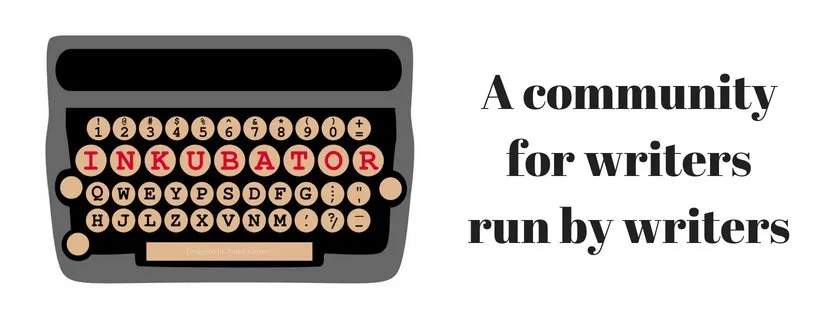
This is Part Two of Floundering in Feedback. It continues where Part 1 left off.
Identify the Root of the Problem
First we had to identify the real cause of the conflicting feedback. My crit partners were pulling me in several different directions and none of them offer haphazard advice. So why were they recommending such different things?
In my case, the opening had already had a few rewrites and we even had two different versions. I could have gone with either of them and had a decent story. But when we started talking through the pros and cons of each version and considered other lingering feedback, we found the real issue everyone was pointing out symptoms of: My character lacked a strong unique voice.
My first draft started from a writing exercise about making a show from a tell about a scary house. I'd started writing words and just kept going into a story. I was writing in first person but I had no idea who she was. She was a generic vehicle for tension and plot. I brainstormed several times to get through the end of the plot, but I never got properly attached to her.
My lack of attachment probably contributed (along with grief I'm still dealing with and chronic health issues) to my difficulties working out what feedback to use and what to lose. So my lead editor and I spent a chunk of time hammering out what made her tick, why she was where she was, and what the decisions she'd have to make in this situation would do to her.
Get to Revising
Once a plan is in place, it's time to start revising. You'll need to work out with your lead editor how to do it. For us, we worked live. He watched my changes in the file in Google Docs as I made them and offered feedback and support while I worked. I gave him edit access, so we could open a Chat window and do everything on the same screen.
This method works for us but you might not be comfortable with someone watching over your shoulder or your lead editor might not have time and prefer you work on the plan for a while and come back later with concerns.
So for me, I wrote a new opener. We figured out what aspect to start with and got drafting. It wasn't perfect right away. We tweaked and modified it until my main character began to come alive. I found her voice, with Andrew's support, and breathed life into the story.
Take It One Step at a Time
However you work with your lead editor, take things one step at a time. Yes, the big picture matters, but don't sweat your problem on page 11 before page 11 unless you need to make changes building up to it. In any case, work through your plan points one by one until they're resolved.
You might even want to write out a checklist or bullet listed plan of what you are needing to do, depending how how you need to progress. If you are stressing a lot or working independently and checking in with your editor, a checklist can really help you stay focused. If items aren't order-sensitive, you can work one item until you get stuck then go to another and fill in questions between points to discuss with your lead editor.
My lead editor went through the story with me line by line. I added voice as needed and he helped me decide what feedback fit the new voice and what didn't. He pointed out spots I overlooked that still felt generic and helped make sure I didn't duplicate information or add in contradictions or echoes.
Once Christina--my character (I actually remember her name now without looking it up, which isn't quite as horrible as it sounds when it's a first person piece)--solidified in my head and I felt like I had a plan, my confidence returned.
Take Some Breaks
My poor editor needed a meal and family time, so we noted a bookmark in the file and I kept going without him. Any time I was unsure, I did my best and left a note to double-check it. Knowing he'd go through it made it easier to move forward one paragraph at a time.
I took a fresh air break of my own while he was gone to get a little exercise and play with the dogs. Once we had a plan and found her voice I was a lot less stressed and insecure, and the break really helped recharge my batteries.
Despite the time out, I was well into the story before he made it back. We picked up where we left off working together and he went through it with me. And I'm pretty sure he didn't pull any punches either. When it sucked, he told me it needed improvement and let me bounce stuff off him and brainstormed with me until I was happy with it.
Rediscover Your Confidence
Once things started working and I was able to feel good about my edits, it got easier for me to trust myself again. I even got enough courage back to Stet an adverb multiple reviewers had flagged for removal at different times. I didn't get cocky, but it was a comfort when I did reject things to know he'd call me out if I was taking the lazy route and talking through the pros and cons of the decision clarified things. Most times we found a solution that both listened to the reviewer's concerns and felt true to my character and story.
The spots that had me wanting to run away screaming in the previous days were soon shaped into a story I could be proud of.
Since I'd already injected voice where needed working on my own, the rest of the story went a lot faster.
Reminder to self: be patient and remember no one else edits or reads as fast as me. Slowing down also helped get the panic to go away and I read everything five or six times, catching more echoes and small nuances that could be improved.
By the ending, we were getting a bit of what my mother called punch drunk. It doesn't take alcohol. It's a high off being excited mixed with exhaustion and too much input making a person a bit loopy and silly. We weren't sure if we went too far in the ending. Some of our versions definitely did. So we sent that section off to two reliable and extremely talented crit partners for feedback.
Part Three can be expected on Thursday.
Posted from our blog with SteemPress : http://inkubatorcommunity.com/floundering-in-feedback-part-2-of-3/
Interested in our community? Follow the link below.
